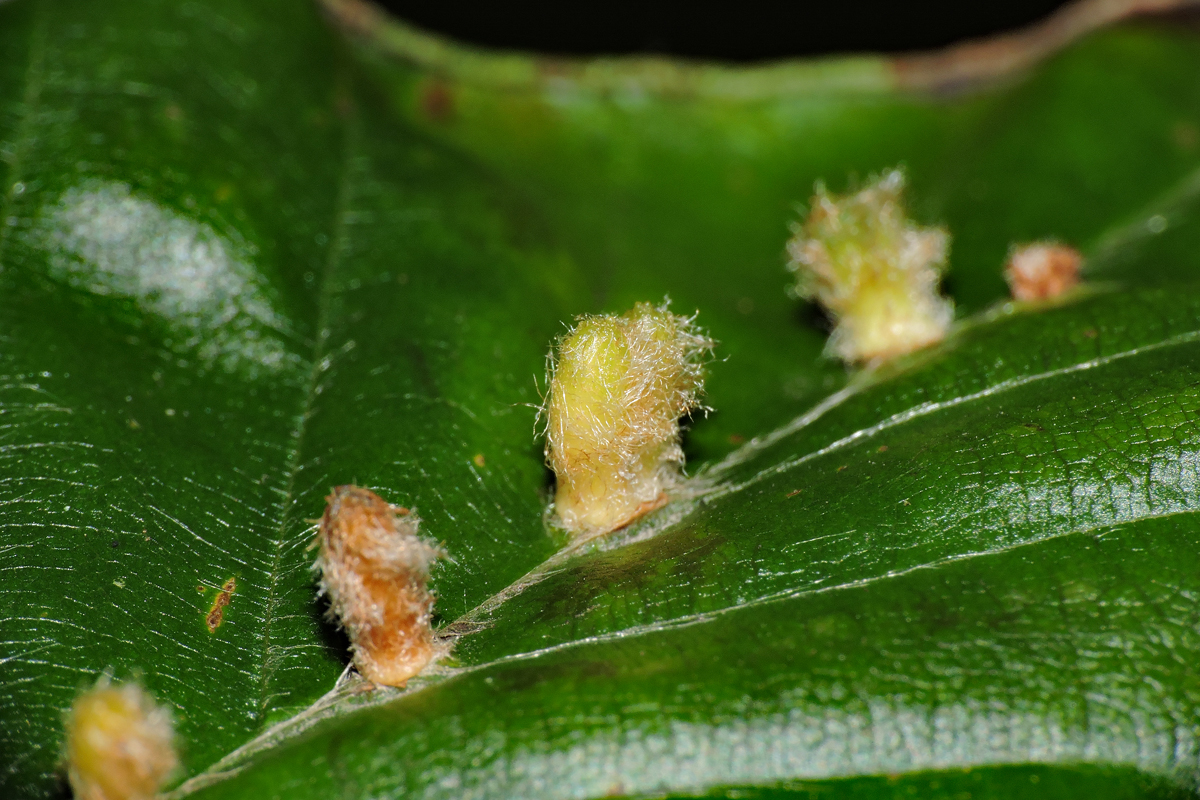It then struck me that this was odd. Whilst Large Yellow Underwing is polyphagous, I only ever find them on the ground feeding on low-growing vegetation - not beaten from high up in shrubs or trees. Many moth larvae eat their eggs first before venturing off, so I wonder if the lack of any evidence of tiny larvae is due them either working their way down the branches and trunk to get to the ground, or perhaps simply dropping down. I'm going to keep my eye on this batch and see if it similarly disappears.
Otherwise today has been far too windy and wet to think about doing anything this evening, so here's a few galls and bits from Swithland Wood at the weekend.
This Beech leaf shows the rolled-edge gall created by the mite Acalitus stenaspis. The first Beech I looked at had this on a very high percentage of visible leaves, and then every other Beech I looked at had none or very few
This gall on Beech is caused by a dipteran larva, Hartigiola annulipes. Again, lots of these on the first Beech, fewer on others.
This one is on lime, and notably each gall is precisely located at the junction between veins. It's another gall-causing mite, Aceria exilis.
Amongst the 1000s of silk button galls on oak caused by the wasp Neuroterus numismalis (visible here) and spangle galls caused by the wasp Neuroterus quercusbaccarum, I found a few of these 'kidney bean' galls caused by another wasp, Trigonaspis megaptera.
Not sure why, but I potted up a couple of 'red ants' to look at. They turned out to be Myrmica ruginodis, showing the two thoracic spines that are as long as they are wide apart, and a gently curved basal section to the antennae.
A quick poke around under loose bark on a rotting trunk revealed a load of these chunky and slow-moving Collembola which looks right for Neanura muscorum.
In advertently captured on one of the lime leaves I collected was this Eucallipterus tiliae aphid nymph. This is a bit of a bonus; I have seen and photographed this species as an adult before but for some reason I'd not added it to the list.
A bit of proper larval life to round this off, a Grey Dagger.










4 comments:
Ah right! See your top pic of the beech leaf, my eye immediately homed in on the Stigmella tityrella mine and I honestly never even noticed the mite curls. I wonder if I've been overlooking this up here. And everywhere, in fact - one I've yet to record. I shall report back :)
Yes, I'm sure I would have completely overlooked it had I not already become aware of it from my basic Galls guide. There is a similar gall on lime. Good luck!
What is the common galls guide? Keep finding them so may as well try and ID them!
Wildguides, Chinery: https://www.nhbs.com/britains-plant-galls-book
Post a Comment